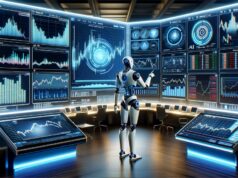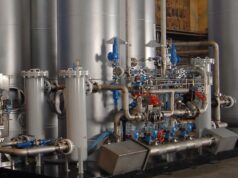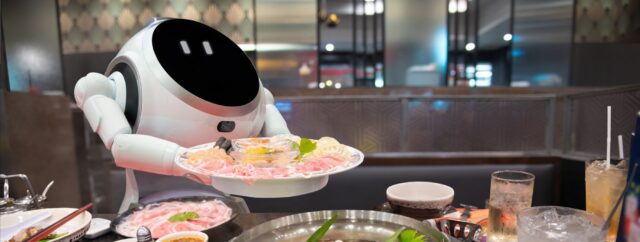
If right now, at this instance, we found a portal to take us to the near future and look at the current state of farming under the management of humans, it will not surprise us to find the robots running the show entirely. They are the redefinition of food production, packaging, and delivery.
Automation is the key contributor to this freedom the robots own fully. A case example is cafe.rozum where a robot tends to your needs from payment, customization of your beverage, and it’s delivery to your coffee-thirsty hand grip. This automation-in-practice is unparalleled by its efficacy and precision. Thus the last few years are a witness to a dramatic increase in the use of robots to lessen the burden of human labor in the food & beverage industry.
Their efficient applicability is a continuous highlight through their systematic processing and packaging routines. With the robots on our side, the manufacturers can expect an improvement in hygiene and an increase in productivity. Therefore, such enhancements in process control are a result of yielded unprecedented processing speeds and available working costs.
The Allied Market Research Firm already has an assessment report on the data translated from the Global Food Robotics Market when the 2025 calendar unravels. This market, by then, will be at an indisputable value of $3.61 billion. Moreover, between 2017 and the stipulated 2025, the registered CAGR (Compound Annual Growth Rate) will be 13.0%. So, two drivers are responsible for these unstoppable waves, the need for the food industry to embrace speedy production techniques and routines, and the public demand for ready-to-eat food products. It is already a success in waiting. The food industry thus has to pay tribute to several trends and developments posed by the robotic industry.
1. Human-like Behavior in Robots like Watching, Learning, and Gripping
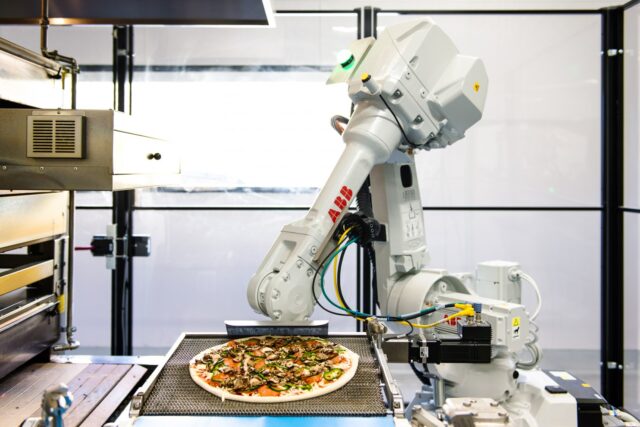
If you only assess the applicability of robots from a movie theatre, you will fail to grasp their practical uniqueness. The fascination in their mimic of humans in a realistic environment is quite an achievement; as a result, a significant contribution to the evolution of the food robots. The gripping ability, for instance, is an excellent asset to the food industry robots such that pulling delicate plants from their environment will no longer be an issue. Thus you only need a handful of such grippers, and you will be sipping coffee during your greenhouse’s or garden’s harvesting season.
The programmed settings of most industrial robots force them to operate blindly. The only barrier between them and the nearby humans is usually a safety cage. However, incorporating some advanced camera features into such robots will make them the best candidates for the food industry. They will be able to scan and identify an object before picking it up or moving it.
Another approach will be for the grippers’ design criterion to incorporate soft polymers. The polymers contraction and expansion as pressure varies will uniquely adept in dealing with the delicate products of the food industry; hence they will become the masters of the nuance tasks. Another advantage will be through the integration of rapid AI advancements thus the grippers will not only be able to see the objects to grab but also make an assessment on the best possible angle of gripping an object. It is like having a bartender and a mixology expert co-existing as one.
2. Human-Like Mobility in Robots Like Scanning, Packing, and Shipping
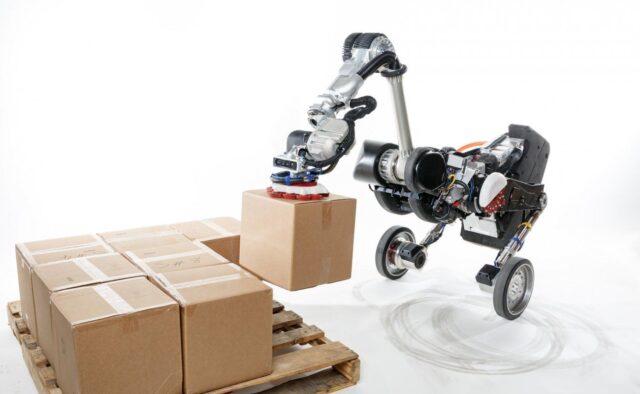
The same way a cashier at a retail store moves the arms around to scan, pack and ship orders in the same emulation the robots are bringing to the table. Warehouses no longer need to accommodate humans to process e-commerce orders successfully. Such autonomous systems have learned the ropes and are ready to serve the hungry human population that is continuously dependent on the food industry.
This testament is already working progress at New Jersy’s Capacity LLC. Despite the company reporting a slower pace when dealing with robots than humans, its preference still lies with the robots. They might be slow but do not take hour lunch breaks or demand overtime payments hence cost-saving and longevity. These robots are thus a return investment in as little as two years after their acquisition.
The Food Industry and Robotics
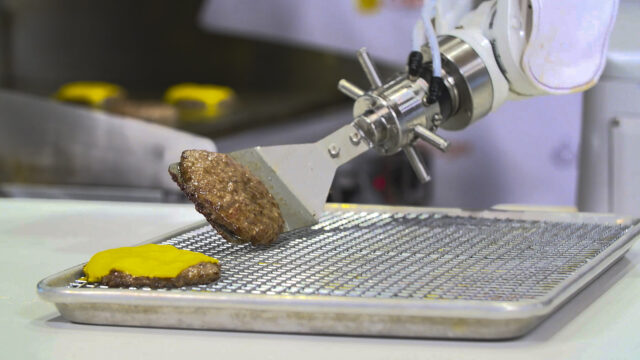
The simplicity and efficiency brought by the conventional system of robotics to the food industry are evident from the time the food crop on the farm, harvested for manufacturing processes and packaged for shipping. From the ground level, even before harvesting, robotic applications are becoming the backbone of agriculture. Their usefulness comes into play when the seedlings need some aspects of planning, identifying, and sorting. We even have drones monitoring and analyzing crop growth for farmers.
Stepping aside from the plants that constitute the agricultural practice, you will also find the autonomous application of robots in the dairy and poultry farm practices. Here, the robots assist in milking and feeding the dairy animals and also collecting poultry products like eggs from the same farm. Thus there is no better way to deal with the growing food crisis that is a ticking time bomb from 7.5 billion earthlings than through the robotic acceleration of autonomous farming.
Repetitive tasks that might seem boring to humans, such as cleaning and transporting raw food products from the farm will be a joy to the robotic arms. Such responsibilities also extend to sorting and detecting defect farm products where the secondary processing adaptability of robots is an advantage. If you thus believe in the ‘time is money’ slogan, then you should already be thinking in the line of robotics.
If things continue to go as planned and we do not lose our faith in the robots, then we will have to remove the word ‘limit’ from the dictionary because there will be nothing to stop the progress of humanity. Very soon, we will not even need to step into the kitchen. The automation of robots will be handling our breakfast preferences, random hot snacks, and also clean after themselves; I mean after the humans’ appetites.
Even a casual stroll on a hot day will find you ordering some chilled ice cream on the sidewalk only to find a smiling robot at your service. Thus the future is in such automated systems, and the smart investors know this fact. Hence the food robots are becoming a talk of the planet with reputable companies like Sony, Connected Robotics, Rozum Robotics, and LG learning from the food industry to simplify human living and existence. There is a new path to a man’s heart, and it is no longer through the stomach, the robots are the key. Robots are not only taking over the food industry but companies like Apex Metal Signs are using them already to make goods


